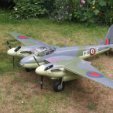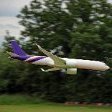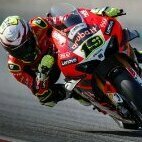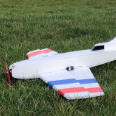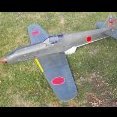Leaderboard
Popular Content
Showing content with the highest reputation since 20/04/24 in Posts
-
Mother in law was reading the Omen and said it was the most frightening book she had ever read. In fact she never finished it. She took it to a local lake and threw it in. I went straight to a book shop and bought another copy, ran in under the tap and left it on her bedside table. Think I’m going to hell for that one.15 points
-
I live in Australia but am considering returning to the UK. We have been through all this nonsense here. I was the guy who was mapping the registration exempt model flying fields for the Australian Miniature Aerosports Society. Commercial drone registration happened. And then recreational drone registration was cancelled. No reason given. We aren't getting it. Reading between the lines of discussions with the Civil Aviation Safety Authority, they realised it would be a huge workload for zero return and would be unpoliceable with much unregistered use expected. Also all commercial drone licenses were for piloted flights for surveying, photography etc. All the autonomous drone delivery trials which were operating in some towns for years, have been scrapped. There were loads of noise complaints. Privacy complaints. Drones and payloads going missing. Drones found smashed up and stripped for parts. It turned out drone delivery is a way to deliver something tiny with zero security. So it has to be tiny in weight and value. The dream has died. Also rather pleasingly CASA now understand there is a difference between drones and model aircraft and have become very easy to work with. I hope things go so well for my British friends.15 points
-
Byron and I had a great day on Saturday when we attended a float fly event. The Catalina had its first outing since being painted and flies very well but has poor water handling. Lucky it has plenty of power to get it onto step. The S6 was built over 25 years ago and was never flown as the builder said the wing loading was too high for the thin wing section. He came out to see it fly and could not believe just how good it is in the air.11 points
-
Nipped out to maiden the 2m RES Mirai I've just finished. I've decided to have a go at some of the FxRes comps' this year, particularly as Kent Interclub is running it's own league for the first time. Some trimming needed but it went well in damp and windless conditions. I got the AUW down to 540g, whether that's enough we'll see.9 points
-
Too windy for the flat field yesterday but perfect for sea cliff soaring. We made some new friends too.9 points
-
Busy couple of days - outer wing panels sorted and attached, its surprising just how big this is! 🤣8 points
-
In a blatant attempt to tip the balance and in good 'Blue Peter' style.............. Here's one I made earlier.8 points
-
Hi chaps, Back from the field a bit earlier than expected. Nice sunny weather but was windy ..... too windy. Around 20 - 25 mph. I got a flight in with relatively calm conditions then the wind picked up. I done a second in the wind and landed early as somehow my rates were not kicking in when I tried to reduce from 100% to 60 %. Somehow the settings must have been upset. Took off again with 60% rates and all was good. Done my third landing of the day and my mentor decided to take his Savage Bobber up. The Bobber took the wind conditions quire well but a dead stick forced a premature landing for him. By this time the wind was picking up further so we decided to call it a day rather than risk the models. Still a good day but just a little shorter than expected. No big deal ...... here's to next weekend. Toto7 points
-
Hi folks, still ticking along.... I decided to do the wing fillet using thin ply and curved balsa as I had used the method on other aircraft. First made a template and cut some very thin ply to shape. I glued it on with Gorilla brown glue as it expands and fills gaps nicely. The clingfilm on the wing stops it sticking. Next I used some trusty cereal packet cardboard to make a template and cut out the balsa fillets. Bit of a soak in hot water and some super glue and jobs a good'n' 🙂 Next onto the covering stage. I used Sainsburys brown paper (£1.50 a roll) and Evostick exterior glue for no other reason than I had it on the shelf. This I diluted with about 5% water. What can I say..... it works absolutely beautifully!!!!! Thank you Richard for the technique. It was a stress and wrinkle free process. I painted it on the back of the paper then applied almost immediately, smoothing down with a dry cloth. quick wipe with a damp clothe to remove any glue that gets on the surface then a going over with a hot iron (150) with a sock on. Amazing how it can go round curves, brilliant. when all was dry for a few days I sealed the surface with some Ronseal interior acrylic varnish, once again watered down 5% and applied with a sponge so as not to use excessive amounts. Lovely surface and only used one roll of paper, will definitely use again! I also added a bit of detail to the tail feathers just for interest. . On to the cockpit detail bits. I know that all of this is invisible when you are flying past at 200ft but it is one of the things that I always get huge enjoyment from. It is made from a combination of my 3d printed bits, Weetabix box cardboard and scraps of foam and balsa. All the cockpit parts weighed in at just under 15g which is good. Mr Pilot was a bit short in the body so I gave him a booster bit of foam to raise him up. The gun sight is a bit of food packaging and card. Pleased with how it turned out, he looks happy in his office! In the back ground is my other ongoing project, a Flair Legionnaire being built as a Nieuport 11. Next on the list is to get the vac formed parts glued on and the canopy - then its paint time! Hope you are enjoying your builds as much as I am Cheers for now, Simon7 points
-
As long as I am still breathing, there will be IC-powered models flying in our skies.7 points
-
This is my take on fitting the radiator on the underside of the wing. first I added some extra width to the base that gets glued to the wing. Instead of sanding a V shape on the underside to fit the dihedral, I cut it in half and sanded the top flat. Then I added some extra width to the radiator and sanded to shape. Here I really struggled to get the angles right to blend with the vac formed front scope - it just didn't look right. So I tried gluing on some scrap balsa and sanding to shape. I think I will go with this option. More later...7 points
-
Forgot to mention ....... there was one dodgy moment. Flying into the sun a bit and lost my orientation. My mentor stepped in to rescue the situation. No issues. It does show however that you can fly all the circuits and landings that you like but you are just a second away from a crisis. All good experiences though as you can only learn to cope with it if y9u get into a pickle now and again. My ability to correct myself is usually pretty good though and getting better with less reliance on my mentor. Here's to next week. Toto7 points
-
Another great day. Four flights in total. Three take off's and four landings. My mentor did the first take off to demonstrate the intended circuit as this was a new site for me. I took over from there. So .... apart from taking off, some circuits, some procedural turns, I had a couple of attempts at aborted landings which went OK. Had to be told that my initial approach speed was a little too slow though. The landings were mostly good ( on grass ) with the last one of the day being the best. Quite happy. Next session, more of the same but with more procedure turns, some figure eights and some circles. Coming on great now ...... I smell the possibility of Solo approaching ..... Toto7 points
-
Now all back together. Hole? What hole. A new "heavy" nose cone printed in double wall PLA rather than a single wall in LW-PLA. It also has 5g of lead in it so 13g rather than2. The CofG is now still further forward. It looks crazy but it flew impossibly tail heavy at the left hand mark (25% mean chord). Still flew tail heavy at the middle mark (18%). The right hand mark is at about 12%. I just have to accept that the long relatively bulky forward fuselage compared to the tiny wing creates a substantial nose up pitch at the normal angle of attack for such a light weight low powered plane. The final modification will be to cut down the full span ailerons as the roll sensitivity is much too great. Even the gyro can't control it at the moment.6 points
-
I was so pleased to hear that the marvelous artist, Roy Cross, so famous for his work with Airfix turns 100 today. Such an influential man, and in many ways the driving force behind the excitement of buying a favourite Airfix model - our imagination bought to life before our eyes with his stirring box pictures. I often leaf through a couple of books I have of his Airfix artwork, and am immediately transported back to the mid sixties as a youngster taking in all the detail of a B17 being harried by the Luftwaffe and dropping its bombs amid bursting flak - or a Spitfire streaking away from a vanquished 109 smoke pouring from its engine. Great days, great art......Happy birthday Roy and thanks.6 points
-
First UK F3A competition of the season last Sunday at Hurley in Warwickshire, a great day's flying had by all, mostly in sunshine although not very warm.6 points
-
Here's another one! Clubmate Steve had never built a model before so this is his first attempt, personally I think that he did fine job. He asked me to maiden it and after adding some nose weight (he was using a 2200 mAh 4s battery) it was ready to go.6 points
-
Another day at the field with the Warbirds FW190 and Hurricane + the BT Corsair 9.30 am till 4.30. Not as warm as yesterday but good flying weather. A good turn out again quite a lot if banter, 16 batteries to charge, took more but it started spitting on to rain which stopped when we reached the car park.6 points
-
Realised at the field this afternoon it was the first time I’d taken more balsa models than foam. Had a few great flights and finally got comfortable flying the TN Hunter (after switching today to a much lighter battery). As ever the Warbird Replicas Focke was flown the most, but all three were great despite the wind!6 points
-
Without knowing the exact model being discussed i cant say if the following will apply directly. For very light foamy models will will not be applicable, but for everything else it should apply. Flaps tend to be a little misunderstood in modelling circles with a great focus on the increase in lift they provide. This is true of course, but the big thing they add is drag. This is important as it completely changes the way you fly the approach. Many modellers fly long an fairly flat approaches with the nose high in an effort to bleed speed off. This is not at all uncommon and i do it myself with some of my more slippery sport models. However, this is not ideal from a tip stalling point of view as you already have the wing near its critical angle of attack, and as we know stalling is all about angle of attack and not airspeed. If you add flaps to a model, and give them a fairly healthy deflection the added drag means you can fly a steeper nose down approach with power off and not accelerate to warp speed in the process. The added lift will also mean a lower angle of attack is needed on the wing as a whole, further improving tip stall margins. As your efforts in this configuration are mostly aimed at shoving the nose down, rather than holding it up, you cannot stall the model. Yes As i have said many times before, one great help is an elevator flap mix. I use these all the time on my warbirds to re trim the model for landing as lowering the gear and flaps along with reduced airspeed usually causes a significant nose down trim change. Set up correctly this will make your model 'stall proof' if the correct technique is used. It should also help in your case with the chipmunk. First, make sure your c/g and elevator rates are half decent. IF the model has massive elevator rate and/or is out of balance your are on a looser from the get go. With that covered, set your flaps to the desired deflection. Dont be shy, get them down a good 40 degrees or more (89 degrees for a spitfire!) and enable the elevator flap mix on your tx. It should be set up so that as the flaps are lowered elevator position changes to deal with the trim change. The flaps are the master channel, moving the elevator should not move the flaps. Generally, models will need up trim with flaps deployed if they have retracts as well. The added drag of the gear below the model causes a nose down pitch, so i always start with about 5% up on the mix just to make sure its working as intended. With that done leave the mix menu open on the radio and go flying. Get the model into the landing configuration and observe the response. Adjust the mix while in the air until you get to a point where the flap mix is set to hold the model in level flight at just over idle power without stalling. The way i set this is to increase the up elevator on the mix until the model stalls, note the value, and then knock a bit off. Sometimes i will get to a comfortable feeling setting before a stall, and in those cases i give the elevator a few tugs to see how close i am to provoking a stall, then make adjustments as needed. If you are not confident beeping your tx buttons without taking your eye off the model employ an assistant to beep for you. if it all goes wrong be on a hair trigger to get the flaps up so the mix is disabled. If you have to look at your radio to find your switches, spend a little time before flying finding them on the radio by feel until you can do it with your eyes shut. Having a standard switch layout for all models is also very handy. I cant believe the number of people i have flown with who have a different layout of switches for every model. Its like they loaded a shot gun with switch assignments and just fired it at the radio each time. With your mix set up nicely its time to land and you need to fly a more formal landing circuit than most are used to and at a higher altitude. If you whizz downwind and just dump full flap the model will damn near do a backflip as the model will be way too fast for your flap mix trimmed speed. A 3 position switch is needed as a minimum, a slider or servo slow on the radio is ideal. Either way, the general idea is to slowly add flaps as you slow down on your downwind leg so that when you turn base they are full down and you are holding a small amount of forward elevator pressure on the stick. You can then bin your forward elevator pressure as you roll into your base turn using the slight up trim condition to float you round. Once lined up leave the elevator alone. If the model is falling too fast add power, if its going long pull some power off. Use the throttle to control the rate of descent and dont touch the elevator. We know the model is trimmed for a just above idle level flight airspeed/aoa which is below the stall so it will naturally fly to that trimmed speed and so cannot stall. The energy to maintain that speed can come from the engine, or from gravity. More more engine you use the less gravity, so a lower rate of descent. The less engine and more gravity...you get the idea. The point is if you just leave it alone it cannot be stalled like this as its just parachuting down with those big draggy flaps keeping it all under control. All you have to do is decide when you level off, and use just a tiny squeeze of elevator with a little added power to achieve this. Ideally you are now about an inch off the floor in level flight. Chop the power and slowly tug on the elevator until you either stall or mush onto the runway. Taxi back looking smug as your club mates look on after your perfect landing. This is a very different landing technique than most modellers are used to and it demands accurate use of throttle as well as resisting the urge to yank on the elevator. If you can do that, your scale models should be a great deal easier to get down.5 points
-
Your right dear I'll start keeping some in the house5 points
-
That's why I made mine from depron and foamboard same size less than half the weight. At present uses 2 3s 3000. It would be better about 60" with a single battery. I tend to fly the 110 more as it is one piece, twice as many flights with the same batteries and I can hand launch it myself. Now I have the dolly I will see how the Mosquito goes from that.5 points
-
And in my 6th week of rehabwhtomorrow I’mmoving to another rehab centre t to continue my progress. In the last week I have stood unaided from my several timeschaand taken a few steps outside of the parallel bars with a stick for support! This is where I am off to, in sunny St Neots…5 points
-
I suppose I can finish this thread off now with a successful conclusion. After finishing the model in primer, it was successfully test flown in October 2022. I then left it alone until this spring when I painted it and it was flown again at the first PSSA event of the year at the Great Orme.5 points








